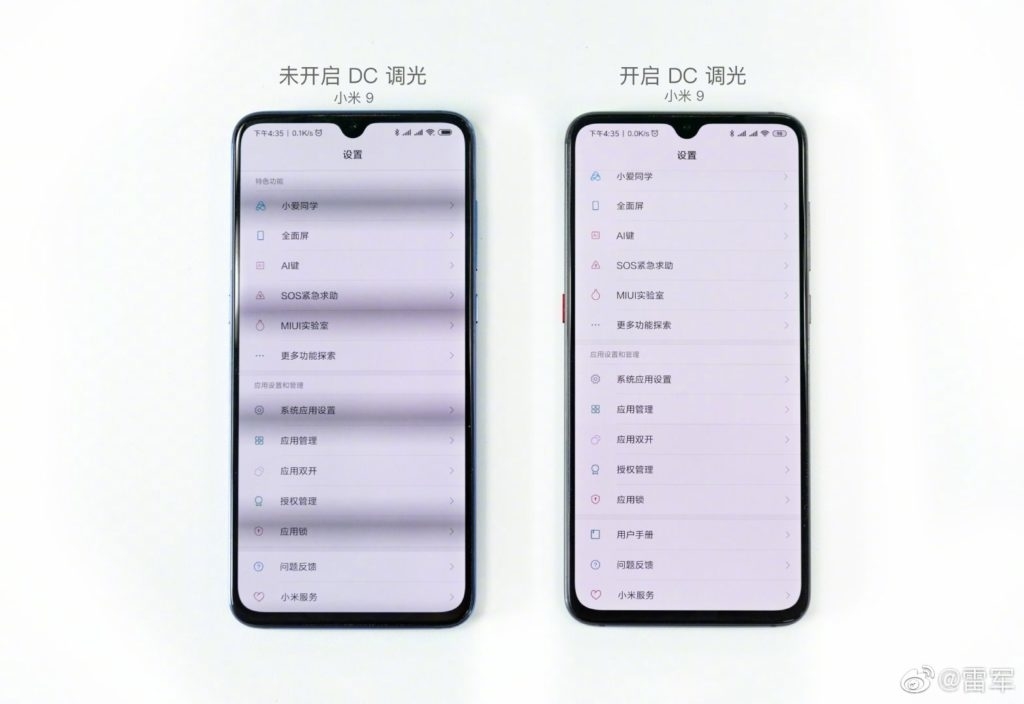Ever since the Black Shark 2 was released, many users have been envious of the quality and features of its AMOLED display. In fact, the latest Xiaomi gamer phone is currently the only one in the company's range that uses DC current to adjust the brightness of the screen. Why is this important?

Currently, the brightness of OLED displays can be adjusted in two ways: DC and PWM. The brightness of a DC voltage controlled display is adjusted by changing the voltage or current of the screen, i.e. its power. The PWM, or pulse width modulation mode, does not change the screen power, alternately flickers the screen at a certain frequency, and continuous display is achieved by the residual visual effect of the human eye. If you turn on a camera on another mobile phone and look at the PWM screen with it, you can clearly see the alternating flashes of black stripes.
Xiaomi CEO promised to be included in the closed beta of the Mi 9 today, but by June, not only the open beta but also the stable system will get it, making it even more convenient on the eyes and battery. With DC brightness control, you can quickly adjust the brightness of the display with the ambient sensor and also the power, power consumption and dissipated heat as the brightness decreases.
The change is only for the Mi 9 for now, and will be available later, but may be at the same time for older phones with AMOLED display, such as Xiaomi Mi 9 Alita/SE, Mi 8/Pro/EE, Mi Mix 3.







![[148] HyperOS heti hibajelentés](https://helloxiaomi.hu/wp-content/uploads/2024/04/hyperosbugreport148-218x150.webp)


![[42. Hét] HyperOS globál ROM változások](https://helloxiaomi.hu/wp-content/uploads/2024/03/hyperoschangelogindex1080-218x150.webp)
![[40. Hét] HyperOS globál ROM változások](https://helloxiaomi.hu/wp-content/uploads/2024/03/hyperoschangelogindex-218x150.webp)










![68418ffbly1g2i4xtouk1j217m0u0jtx[1]](https://helloxiaomi.hu/wp-content/uploads/2019/04/68418ffbly1g2i4xtouk1j217m0u0jtx1-1068x735.jpg)




